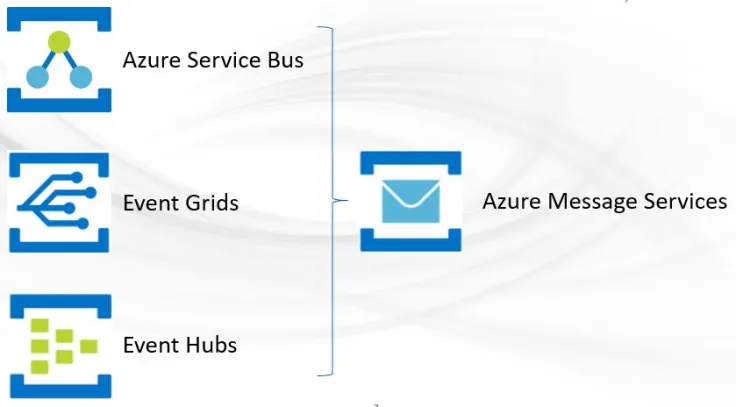
As of my last knowledge update in January 2022, Azure provides several messaging and event services to enable real-time data processing, event-driven architectures, and reliable communication between different components of your applications. Below, I’ll explain each of these services in more detail and provide examples to illustrate their use cases:
Azure Service Bus
Description
Azure Service Bus is a fully managed message broker service that provides publish-subscribe and message queuing capabilities for building scalable and decoupled applications.
Example
- Scenario: Order Processing in an E-commerce Application
- Description: When a customer places an order, order details are sent to a Service Bus queue. Multiple backend services, such as order processing, inventory management, and shipping, listen to this queue. This decoupled architecture ensures that order processing can scale independently from the order placement.
- Diagram: You can find diagrams and documentation in the Azure Service Bus documentation.
Azure Event Hubs
Description
Azure Event Hubs is a data streaming platform for ingesting and processing large volumes of events and telemetry data.
Example
- Scenario: Real-time Data Ingestion from IoT Devices
- Description: Thousands of IoT devices send sensor data to an Event Hub. Azure Stream Analytics processes this data in real time, allowing for real-time analytics and the generation of insights or alerts.
- Diagram: Detailed diagrams and documentation can be found in the Azure Event Hubs documentation.
Azure Event Grid
Description
Azure Event Grid is an event routing service that simplifies event-driven application development.
Example
- Scenario: Serverless Image Processing in Azure
- Description: When a new image is uploaded to Azure Blob Storage, Azure Event Grid can trigger an Azure Function to process the image. For example, it can generate thumbnails, perform OCR, and store metadata in a database.
- Diagram: You can find detailed diagrams and information in the Azure Event Grid documentation.
Azure Functions
Description
Azure Functions is a serverless compute service that allows you to run code in response to various events.
Example
- Scenario: Real-time Twitter Sentiment Analysis
- Description: Azure Functions monitor a Twitter feed for specific keywords. When a matching tweet is detected, the function processes it, analyzes sentiment, and stores the results in Azure Cosmos DB for further analysis.
- Diagram: Diagrams and documentation are available in the Azure Functions documentation.
Azure Logic Apps
Description
Azure Logic Apps is a workflow automation and integration service that can be triggered by events from various sources.
Example
- Scenario: Automated Customer Support via Email
- Description: Azure Logic Apps can monitor an email inbox. When a customer sends an email with specific keywords, the Logic App triggers an automated process to create a support ticket in a CRM system and notifies support agents.
- Diagram: Diagrams and documentation are available in the Azure Logic Apps documentation.
Azure IoT Hub
Description
Azure IoT Hub is a fully managed service for connecting, monitoring, and managing IoT devices.
Example
- Scenario: Smart Home Automation
- Description: IoT devices in a smart home, such as thermostats and lights, connect to Azure IoT Hub. Users control these devices via a mobile app that sends commands to the hub, which then forwards them to the devices.
- Diagram: Diagrams and documentation are available in the Azure IoT Hub documentation.
Azure Stream Analytics
Description
Azure Stream Analytics is a real-time data stream processing service.
Example
- Scenario: Predictive Maintenance in Manufacturing
- Description: In an industrial setting, sensor data from machinery is streamed to Azure Stream Analytics. The service analyzes the data in real-time, detects anomalies, and triggers maintenance alerts to proactively maintain equipment.
- Diagram: Detailed diagrams and documentation can be found in the Azure Stream Analytics documentation.

